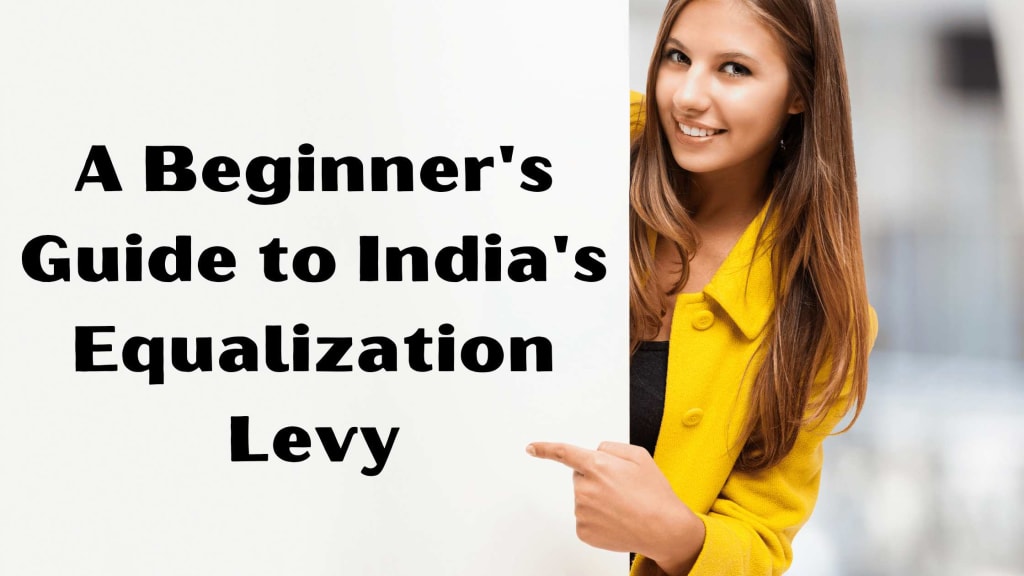A BEGINNER’S GUIDE TO INDIA’S EQUALIZATION LEVY
INDIA’S EQUALIZATION LEVY

Let us go back to the year 2016 when the Indian government decided to implement something called the ‘Equalization Levy’, with the intention of taxing digital transactions; especially those made by foreign e-commerce giants who were earning big from sales in India. Indian govt wanted to ensure that such companies contributed their fair share of revenues through corporate tax even if they did not have a physical presence within the Indian territory.
ONE MAY WONDER, WHAT REALLY IS THIS THING WE ARE CALLING ‘EQUALIZATION LEVY’?
In simple terms, it is a charge imposed on income earned by non-resident entities for certain specified services provided to residents or businesses within India. Its aim therefore is to bring even these offshore digital service providers into our tax net just like local firms do.
Now, having said that, how does it Equalization levy function? Let Us Understand
Specified Services: Initially the rate of this tax stood at 6% of all payments made to non-residents for online advertisements along with any other connected services.
Let me give an example; suppose a company based in India spends $10,000 on Facebook ads then they must deduct 6% ($600) as Equalization Levy before remitting the balance to Facebook.
However, there is a twist! Effective from 1st April 2020, Indian Govt introduced another 2% equalization measure targeted towards e-commerce operators. This applies to any supply of goods or provision of services facilitated using an IP address located in India whether directly (selling through own platform) or indirectly (through third-party marketplace).
For instance, if Amazon US sells products worth $100,000 to customers in India, then it will require to pay $2,000 as EL.
Who is responsible for payment? Regarding 6% advertising tax, the recipient of Indian services must deduct and remit them. However, foreign e-commerce firms mandated by law to observe and pay themselves for the 2% e-commerce operator levy.
Things you should know:
- Permanent Establishment: The charge does not extend to non-resident companies with a business connection in India and such services provided through this establishment.
- Exemption Thresholds:
Payments made abroad exceeding Rs 1 lakh annually attract 6% equalization levy on gross amounts paid to non-residents.
In addition, payments made for India transactions more than Rs 2 Crore annually shall be liable to 2% equalisation charges on the amount received or receivable.
- Business Purpose: An individual would not require participating in the payment of this charge for private expenses or those not related with any trade profession or vocation executed by him alone or jointly with others throughout the year.
- Relief for Double Taxation: Income which has suffered equalisation tax shall not again suffer income-tax in India.
Let us get to know about rules and avoiding penalties!
Due Dates: There should be credit of 6% equalization levy by 7th of next month following such payment where it relates to any amount credited or paid after June 1st and before May 31st; however, if it concerns sum credited/ paid on or behalf of government then within thirty days from date when such amount was actually credited/ paid.
Withholding and/or deduction of 2% as income-tax from sums payable for electronic commerce supplies made during first quarter must be done on or before July 7th, then again during second quarter not later than October 7th, third quarter before January 7th each time until return’s due date itself!
Filing Returns: By 30th June of the following fiscal year, an annual report should be file.
Penalties: In overdue payment cases 1% per month; In case of noncompliance disallowance of expenditure fines can be imposed even imprisonment where fraudulent statements are made so best bet is do what they say!
Illustration based on real-life situations for better understanding.
Rohan is an Indian businessperson who has spent ₹2,00,000 on Facebook ads. Facebook bills him ₹2,12,765.9 including 6% tax (₹12,765.9). He remits ₹2,00,000 to Facebook and deposits the tax with the Indian revenue authorities.
For e-commerce purposes, assume Amazon US sells goods worth ₹3 crore to customers in India. Amazon will require to pay the Indian government ₹6 lakh as Equalization Levy being 2% of ₹3 crore.
Conclusion
This is what the Equalization Levy tries to achieve by taxing the digital economy in India so that even foreign firms without any physical presence in the country contribute towards these taxes. It addresses the issues posed by the digital age and seeks fairness between local and global enterprises. Understanding its ramifications will enable companies to abide by them thereby avoiding fines or other punitive measures.
Disclaimer:
The information provided in this content is for general informational purposes only. You should always seek the advice of an expert before making any decisions based on the information provided. We do not warrant or guarantee the accuracy, completeness, or usefulness of the information provided. Any reliance you place on such information is strictly at your own risk. We are not responsible for any damages, losses, or expenses related to the use of this content.
About the Creator
Enjoyed the story? Support the Creator.
Subscribe for free to receive all their stories in your feed. You could also pledge your support or give them a one-off tip, letting them know you appreciate their work.





Comments
There are no comments for this story
Be the first to respond and start the conversation.